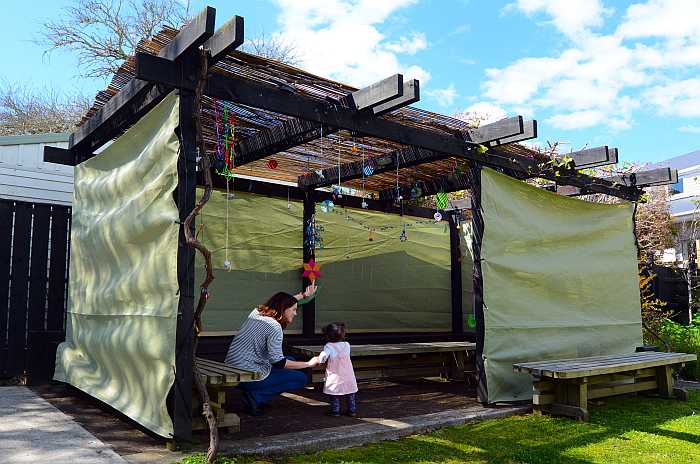 Etrog%2C lulav%2C hadas%2C arava_0.jpg)
The arba minim (four species) association with the Jewish holiday of Sukkot (Photo: Envato)
Sukkot, also known as the Feast of Tabernacles, is a joyful Jewish festival celebrated five days after Yom Kippur. The festival commemorates the period in which the Israelites wandered the desert living in temporary shelters, known as Sukkot. It also marks the time of the year when the harvest is gathered in Israel. The holiday begins on the 15th of the Hebrew month of Tishrei and lasts for seven days in Israel (from the 15th to the 21st) and eight days in the Diaspora (from the 15th to the 22nd). In the Gregorian calendar, Sukkot usually falls in late September to mid-October.
When is Sukkot? How many days is Sukkot?
Sukkot 2025 begins at sundown on Monday, October 6th and ends at sundown on Monday, October 13th. Sukkot is immediately followed by Shemini Atzeret and Simchat Torah on October 14-15, 2025 (October 14th in Israel). The holiday of Sukkot lasts for 7 days. The first 2 days (1 day in Israel) is similar to Shabbat when no work is allowed. The rest of the days are called "chol hamoed" when meals take place in the sukkah but work is allowed.
When is Sukkot? How many days is Sukkot?
Sukkot 2025 begins at sundown on Monday, October 6th and ends at sundown on Monday, October 13th. Sukkot is immediately followed by Shemini Atzeret and Simchat Torah on October 14-15, 2025 (October 14th in Israel). The holiday of Sukkot lasts for 7 days. The first 2 days (1 day in Israel) is similar to Shabbat when no work is allowed. The rest of the days are called "chol hamoed" when meals take place in the sukkah but work is allowed.
Here are the Sukkot dates for the upcoming years, with the festival beginning at sundown on the dates listed below:
-
2026: September 25- October 2
-
2027: October 15-22
-
2028: October 4-11
-
2029: September 23-30
-
2030: October 11-18

Sukkah decorated for the holiday (Photo: Shutterstock)
What Customs are associated with the holiday of Sukkot? How is Sukkot celebrated today?
One of the main customs of Sukkot, whose name translates to "booths" or "huts", is to spend time in the sukkah. Jews around the world build their own sukkahs, go to a public sukkah or join a program that has a sukkah. These sukkahs become the heart of the celebration, with families gathering to eat all their meals inside them. Some Jews have the tradition of sleeping in the sukkah, truly embracing the commandment to "live" within these makeshift structures throughout the week. This time spent in the sukkah allows for reflection, gratitude, and a unique bonding experience, as it becomes the primary space of relaxation and festivity during the holiday.
The ritual of the four species, or "four minim", is one of the most iconic and symbolic observances associated with the holiday of Sukkot. Each of these species has a distinct appearance and significance, and their combined use in ceremonial rituals embodies unity, celebration, and a deep connection to both nature and the Divine.
- Lulav: This is a green, closed frond of the date palm tree. It's long and straight, and when shaken, it produces a rustling sound. The lulav represents the spine, suggesting upright and righteous behavior.
- Etrog: A citrus fruit, similar in appearance to a lemon but with a sweet aroma and bumpy surface. The etrog is held in one hand while the other three species are held in the other. It symbolizes the heart, indicating the intentions and feelings that drive our actions.
- Hadassim: These are myrtle branches, characterized by their pleasant aroma but lack of taste. Usually, three myrtle branches are bound together with the lulav and aravot. They represent the eyes, emphasizing the importance of looking at the world through a lens of positivity and gratitude.
- Aravot: These are branches of the willow tree, which neither taste good nor have a pleasant fragrance. They serve as a reminder of the lips and the importance of prayer and good speech.
Together, these four species are used in daily processions during Sukkot, where they're waved in all six directions – north, south, east, west, up, and down – symbolizing God's omnipresence. The unity of the species underscores a deeper message: just as each plant contributes its unique essence to the ritual, so too does every individual in the community have a unique and valuable role. The combination of species with different characteristics is often interpreted as a symbol of the unity of different kinds of Jews, emphasizing the importance of coming together as a cohesive and supportive community.


Simchat Torah celebration - dancing with the Torah - in Israel (Photo: Shutterstock)
What holiday follows Sukkot? What is Shemini Atzeret/Simchat Torah?
Immediately following Sukkot, Jews celebrate the two-day festival of Shemini Atzeret and Simchat Torah. In Israel, Shemini Atzeret and Simchat Torah are celebrated on the same day. Shemini Atzeret features the prayer for rain and Simchat Torah, or "Rejoicing of the Torah," is a day when the annual cycle of Torah readings concludes and begins again. It is a day of great joy, with dancing and singing often taking place in synagogues around the world.
The Shemini Atzeret and Simchat Torah dates for the upcoming years are as follows:
2025: October 14-15 (In Israel: October 14)
2026: October 3-4 (In Israel: October 3)
2027: October 23-24 (In Israel: October 23)
2028: October 12-13 (In Israel: October 12)
2029: September 30-October 1 (In Israel: September 30)
2030: October 19-20 (In Israel: October 19)
The holidays of Sukkot, Shemini Atzeret, and Simchat Torah are a special time in the Jewish calendar filled with joy, reflection, and gratitude. By knowing the dates for these holidays in the coming years, you can plan and prepare in advance.